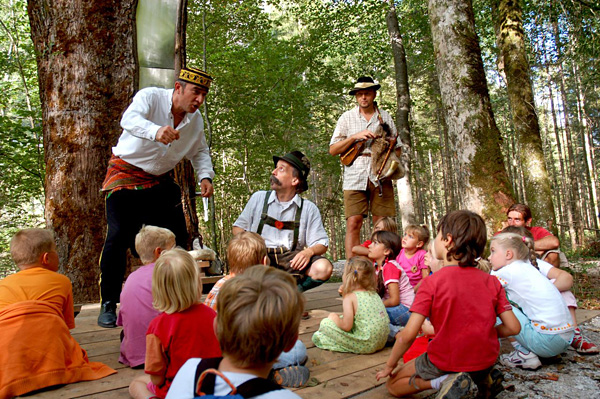Telling Fairy Tales
Oral traditions throughout Austria, inscribed 2010
Telling fairy tales consists in the art of entertaining people by conveying stories in a playful and intellectually stimulating way. The metaphors that fairy tales employ are so simple yet so subtle that they instantly connect all those listening by virtue of their comprehensibility while at the same time allowing listeners to go deeper and reflect in highly diverse ways.
Fairy tales, myths, legends, and anecdotes have been handed down orally for many centuries. The dialectical modes of expression employed are an important feature of their transmission. In former times, people were fond of telling them while working. Today, the various myths and stories are passed on in the context of storytelling groups, cultural initiatives, schools, and preschools. Fairy tale-telling makes a significant contribution to people’s elementary understanding of the world and moral education as well as their coexistence within society and the overall culture. Better than any kind of explicit instruction, fairy tales and myths also convey important things about the cultural identity of one’s own self and the collective. And even if fairy tales all over the world (or at least in Europe) are quite similar in terms of their motifs, they still do reflect the pictorial power of regional circumstances and characteristics.
Finally, telling fairy tales can be a playful way of fostering communication between people from different countries and cultures, since such stories address significant themes from real life.
Downloads
- Application form (in German only) 42 KB (pdf)
- Expertise Dickerhoff (in German only) 86 KB (pdf)
- Expertise Kreissl (in German only) 180 KB (pdf)


![[Translate to EN:] © J. Ségur/ZED, with the permission of UNESCO](/fileadmin/_processed_/d/b/csm_Convention-2003-IKE_0832a6a47d.jpg)
![[Translate to EN:] © ÖUK](/fileadmin/_processed_/3/9/csm_P1011318_7eac86402f.jpg)

![[Translate to EN:] © Weitblickfilm](/fileadmin/_processed_/9/8/csm_Workshop_17_2dee1e1fd8.jpg)